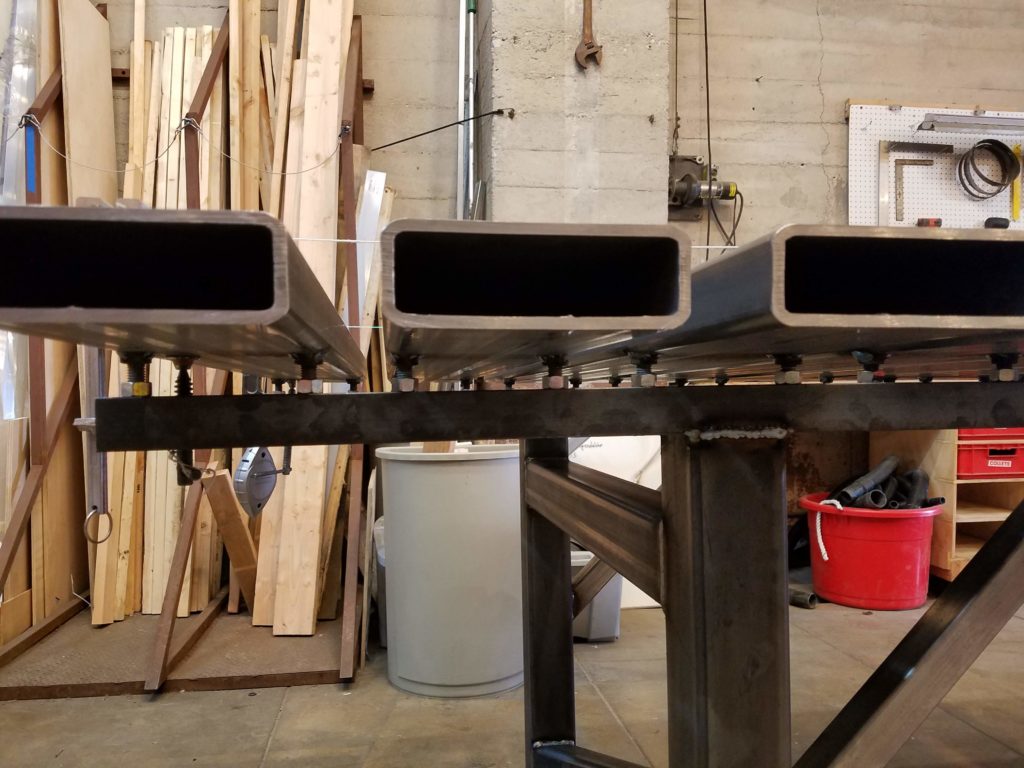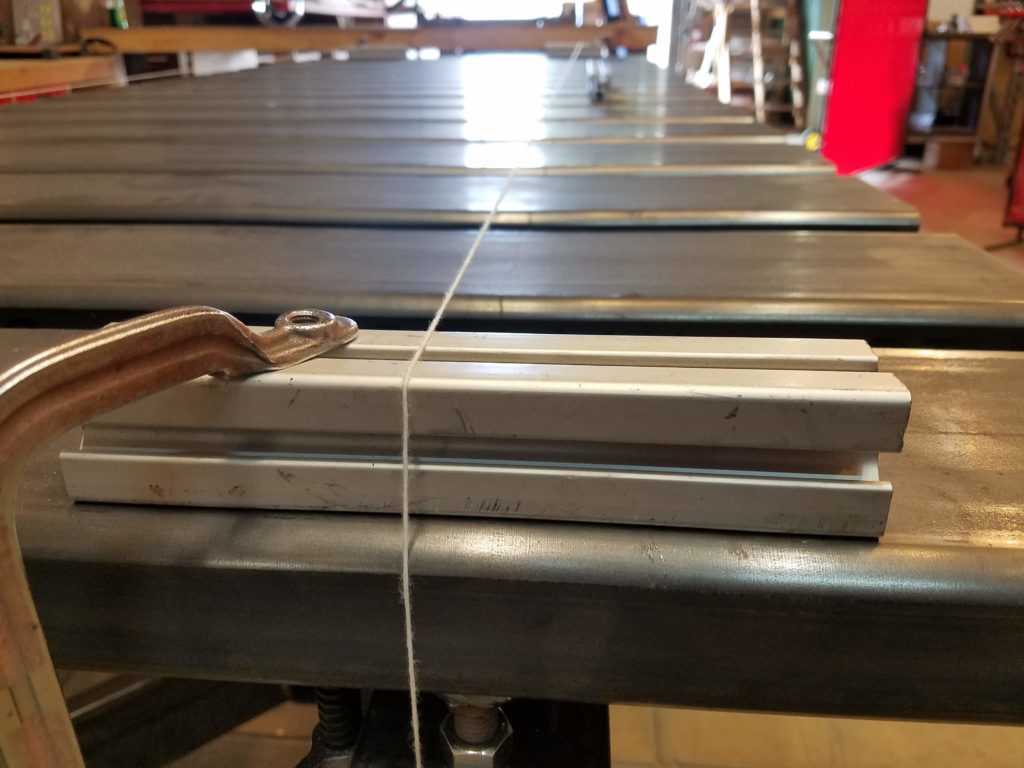While working at Two Bit Circus, we had a need for a large welding table. Something that could fixture some large structures down. Since our games can be roughly 10′ wide, it made sense to make welding table 10′ wide to accommodate us. I decided on a slatted welding table so we could clamp almost anywhere. The hope is that a slatted table won’t gather as much clutter, as people can’t set things down as easily. We’ll see.

I bought my materials and started to cut it all out. First I cut out 6″ x 2″ rectangle tubes with 1/4″ wall thickness. I wanted this table to be heavy and sturdy. I used a fixture to weld 1/2″ bolts on the bottom of every slat. These bolts would run through corresponding holes on some channel steel that ran the length of the table. Nuts above and below the channel could be adjusted to change the height of the slats. This will be important later.

I made the frame out of beefy tube steel, and some structural c-channel. I measured it all out and drilled the holes in the channel ahead of time. It’s much easier to wrangle the steel under the drill press BEFORE welding it together. I finished the main structure with some smaller gussets to support the c-channel. I had to place them accurately to avoid the holes that I just drilled. I had to think about access for the wrench to tighten the nuts as well, but it ended up being pretty straight forward.
I added a big cross beam that tied the legs together, but I didn’t snap a photo before flipping the whole thing over. I also added some very industrial casters. They have built in leveling feet that can be lowered down to pick the table off of it’s wheels, but we mostly keep the table on wheels so it can be moved around the shop as needed.

Once I got the main structure flipped over I added the slats. (Lots of nuts to spin on!) All of the holes lined up beautifully. However, there was a significant bow in the c channel steel, making it so the table top isn’t near flat. But, we have a solution!

I stretched a string along the top of the table, only supported by a couple pieces of scrap aluminum extrusion on each end. I could then check each slat with a third piece of extrusion material. I’d slid it under the string and I would raise or lower the nuts until it just touched the string. I spent one or two hours adjusting the four nuts of each slat. I was able to get all of the slats in the same plane, and even remove a little bit of twist in the slats as needed. Luckily, it probably won’t need such adjusting again.

The end result is a strong, large, flat welding table that rolls easily around the shop. It’s easy to clamp down material with Strong Arm F clamps. It’s not so precious that you would worry about welding a fixture to it, but it’s flat enough to be trusted to make accurate parts. Definitely not aircraft grade, but good enough for an arcade game.
